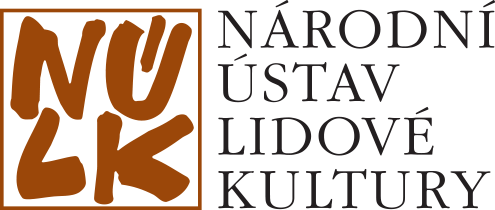An ensemble of garments worn by folk community, especially by rural residents, which tends to safeguard local and regional specific features. It is part of tangible culture and an important earmark to define the affiliation to a region. In addition to the term folk dress, also the terms folk costume or national costume are used. These relate mainly to the festive and the ceremonial form of the dress. One can distinguish between clothing types (a group of clothing ensembles with dominating identical elements whose development is independent on regions, e.g. men´s dress of Carpathian type), and regional types (where it is mainly the cut that is an unifying element, e.g. women´s folk costumes from the ethnographic area of Haná), which often include a plethora of variants (differences in embellishments, ornaments, embroidery colours etc.). The dress can be divided into many sorts – into men´s, women´s and children´s dress according to the sex, into summer and winter dress according to seasons, and into ceremonial, festive, semi-festive, workday and work dress according to its function. Currently, we do not encounter folk dress as worn in its authentic environment in the Czech Republic, only in several regions (southeastern Moravia, the ethnographic area of Chodsko) old women wear semi-costume – a mixture of folk garments and ready-to-wear clothing. However, the folk dress is often rehabilitated to be worn on ceremonial occasions (kermesse, harvest festivals, and weddings) and as part of folk ensembles´ performances. In some regions, especially where the traditional dress was not worn continually, we can see efforts to reconstruct the local folk dress. These reconstructions are mostly based on material, written or iconographic sources; however, often analogies from different regions are used, or an idealized form of the national costume according to romantic ideas of individuals is made.
Literature: D. Stránská: Lidové kroje [Folk Costumes]. In: Československá vlastivěda. Řada II. Národopis. Praha 1936, pp. 207-248.- D. Stránská: Lidové kroje v Československu. Díl I. Čechy [Folk Costumes in Czechoslovakia. I Volume – Bohemia]. Praha /1949/, pp. 4-114.- H. Hynková: Oblečení [Clothing]. In: Československá vlastivěda. III. Lidová kultura. Praha 1968, pp. 141-185.- Irena Štěpánová: Lidový oděv v Čechách 19. Století [Folk Dress in Bohemia of the 19th Century]. Praha 1984.- A. Jeřábková: Odívání [Clothing Style]. In: Lidová kultura na Moravě. Strážnice – Brno 2000, pp. 116-158.
3.1 Folk Dress
terminology: folk costume, national costume, farmer´s costumes, and folk semi-costume
3.2. Types, sorts, and function of folk dress
3.2.1 Types of folk dress: clothing type and regional type
3.2.2 Sorts of folk dress: men´s, women´s, children´s, summer and winter folk dress
3.2.3 Functions of folk dress: ceremonial, festive, semi-festive, workday, work, and profession costume
3.3 The second existence of folk dress
3.3.1 Svéráz [~ peculiarity] movement
3.3.2 Rehabilitation of folk dress
3.3.2 Reconstruction of folk dress
3.4 Materials:
Wool, linen, hemp, cotton, mixture and synthetic materials, leather, and others
3.5 Decoration techniques:
Embroidery, lace and knitwear, print and painting, pre-weaving techniques, appliqué
3.6 Decoration of body and dress:
Hairstyles and beard styles, cosmetics, decoration elements, accessories and jewels
3.7 Care for dress:
Storage, maintenance (washing, ironing, starching, repairs)

